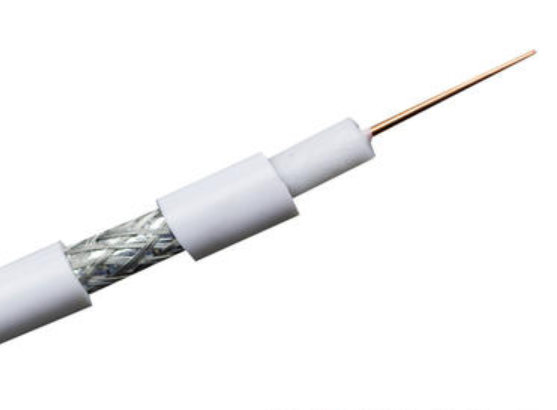
Are All Coaxial Cables the Same?
Whether you're setting up a television system or establishing a network infrastructure, understanding the fundamentals of coaxial cables is essential. In this comprehensive guide, we will explore the ins and outs of coaxial cables, their applications, variations, and their significance in both TV and Wi-Fi setups.
What is Coaxial Cable?
Coaxial cable, often referred to as coax cable, is a type of electrical cable primarily designed for high-frequency signal transmission. It consists of a central conductor, an insulating layer, a metallic shield, and an outer insulating layer.
The central conductor carries the signal, while the metallic shield minimizes interference and ensures signal integrity. Coaxial cables are known for their ability to transmit signals over long distances without significant loss or degradation.
The central conductor carries the signal, while the metallic shield minimizes interference and ensures signal integrity. Coaxial cables are known for their ability to transmit signals over long distances without significant loss or degradation.
What is Coaxial Cable Used For?
Coaxial cables find widespread use in various applications, owing to their excellent signal transmission capabilities. Here are some common uses of coaxial cables:
●Television (TV) Broadcasting
Coaxial cables are extensively used to deliver television signals from broadcast stations to homes. They enable the distribution of high-quality video and audio signals, ensuring a seamless viewing experience.
●Cable TV and Satellite Systems
Coaxial cables are employed in cable TV and satellite systems to deliver a broad range of channels and services to subscribers. They enable the transmission of multiple signals simultaneously, allowing users to access diverse programming options.
●Internet Service Providers (ISPs)
Coaxial cables serve as the backbone for cable internet services provided by ISPs. They deliver high-speed internet connectivity to residential and commercial locations.
●Security Systems
Coaxial cables are used in surveillance and security systems to transmit video signals from cameras to monitoring devices. They ensure reliable and interference-free video transmission for effective surveillance.
Are All Coaxial Cables the Same?
Not all coaxial cables are the same, as their specifications can vary depending on the intended application. Some factors that differentiate coaxial cables include:
●Cable Impedance
Coaxial cables are available in different impedance ratings, typically 50 ohms or 75 ohms. The impedance affects signal quality and determines compatibility with specific devices or systems.
●Signal Frequency
Coaxial cables are designed to handle different frequency ranges. Cables used for TV broadcasting have different requirements than those used in high-speed data transmission.
●Construction and Shielding
The quality and construction of the cable, including the thickness of the shielding and insulating layers, can impact signal quality and resistance to interference.
What Coaxial Cable is Used in TV?
Coaxial cables used in TV setups typically have an impedance rating of 75 ohms. These cables, commonly known as RG-6 or RG-59 cables, are designed to transmit audio and video signals from the source (antenna, cable box, satellite receiver) to the TV. RG-6 cables are preferred for high-definition (HD) and ultra-high-definition (UHD) content due to their superior signal quality and lower loss over longer distances.
Do I Need a Coax Cable for Wi-Fi?
In most cases, coaxial cables are not directly used for Wi-Fi connectivity. Wi-Fi signals are typically transmitted wirelessly using radio frequencies, and coaxial cables are not optimized for this purpose. However, in some scenarios, coaxial cables may be employed in conjunction with Wi-Fi systems. For instance:
●Cable Modems
If you have a cable internet connection, the cable modem that connects to your ISP may require a coaxial cable connection. The coaxial cable connects the cable modem to the cable outlet, allowing it to receive the internet signal.
●Wi-Fi Extenders
In some cases, Wi-Fi extenders or range extenders may utilize coaxial cables to establish a connection between the extender and the router. The coaxial cable is used to bridge the gap between the two devices and extend the Wi-Fi coverage in areas with weak signals.
Conclusion
Coaxial cables are integral to modern communication technology, facilitating the transmission of high-quality signals in various applications. From television broadcasting to cable internet services, coaxial cables offer reliability and efficiency. By harnessing the power of coaxial cables, you can optimize signal transmission and ensure a seamless connectivity experience.







发表评论